Kaveh Madani is an environmental scientist, former deputy head of Iran's Department of Environment, and a former Vice President of the U.N. Environmental Assembly Bureau. He is currently the Head of the Nexus Research Programme at the United Nations University in Dresden (UNU-FLORES) and a research professor at the City College of New York.
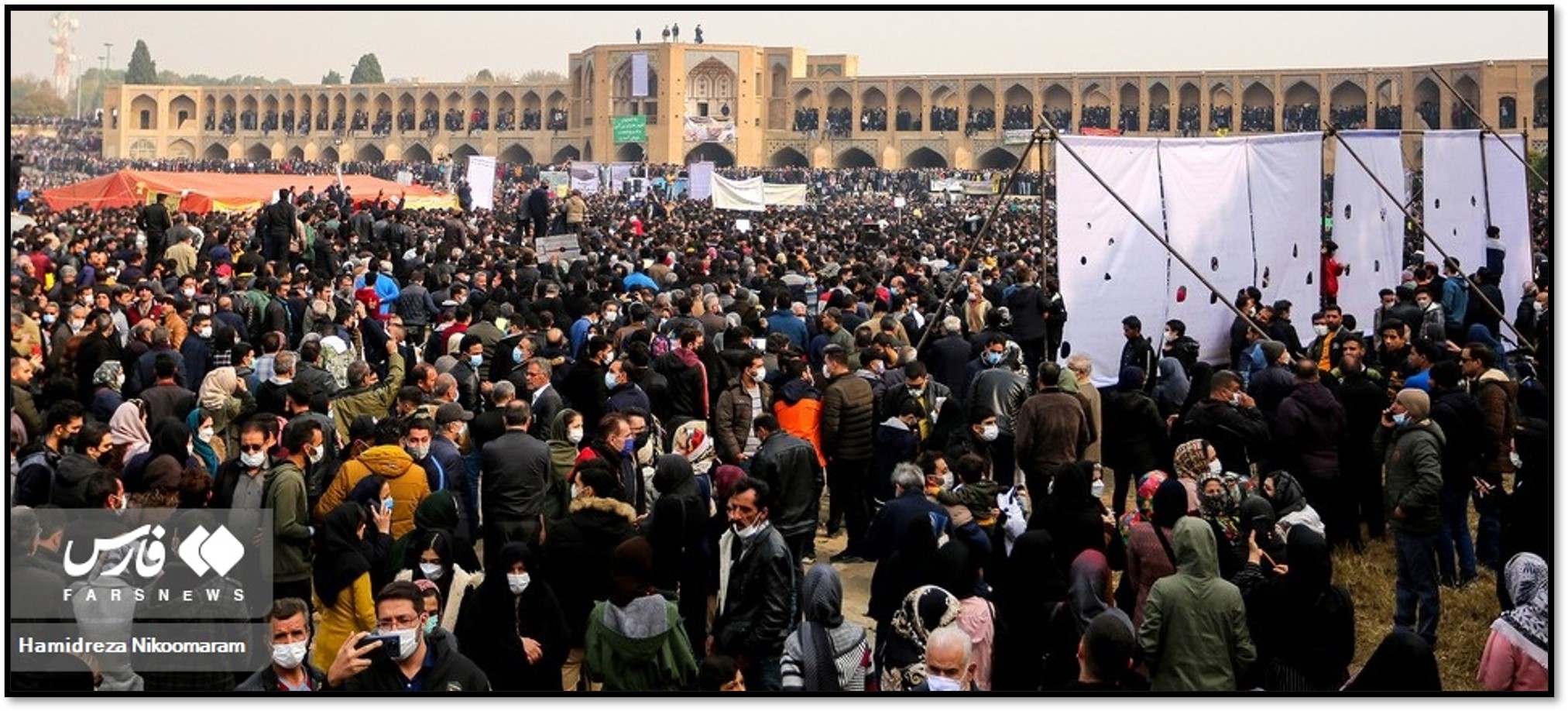
In mid-July 2021, a water shortage sparked protests in the southwest province of Khuzestan that then spread to other provinces over the next weeks. How has water escalated as a national issue? What are the long-term political implications?
Water is intrinsically connected to national security in Iran and the rest of the Middle East. First, water is important for agriculture, especially because Iran cannot meet its own food needs without imports. Since the 1979 revolution, the Islamic Republic has prioritized food self-sufficiency, a goal even enshrined in the constitution. Second, some of the most vulnerable groups in society, such as subsistence farmers, are vitally dependent on water for their livelihood. When water is scarce, they don’t have work.
Most importantly, water shortages have motivated people who would otherwise be unlikely to protest to take to the street to express their anger. Some poorer residents from rural areas and smaller cities have historically been supporters of the government. They rely on subsidies and government programs. So their protests in some ways are more threatening to the state and elicit different reactions from the security and intelligence services than demonstrations by middle class urbanites about social freedoms or political issues.
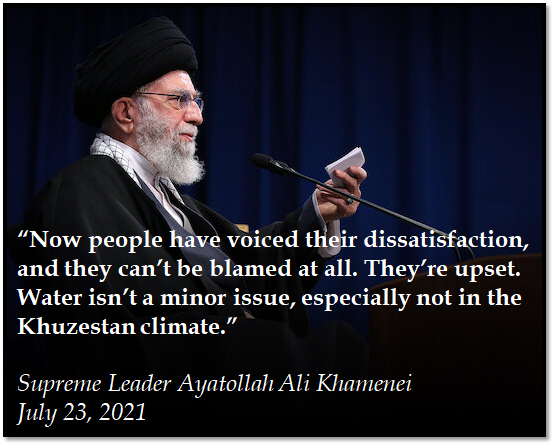 The government, for example, cracked down harshly on the largely middle-class participants of the Green Movement, which organized massive demonstrations in the aftermath of the disputed 2009 presidential election.
The government, for example, cracked down harshly on the largely middle-class participants of the Green Movement, which organized massive demonstrations in the aftermath of the disputed 2009 presidential election.
But the government has usually been more hands-off in its response to protests in poor, rural areas, especially in the case of environmental and water protests. In summer 2021, some innocent demonstrators were killed. But the response was not as harsh as the bloody crackdowns on protests over economic grievances in January 2018 and November 2019.
Water scarcity and related issues have been sparking protests for years. Since at least 2012, farmers in central Isfahan province have been protesting the transfer of water to neighboring Yazd province. Desperate for water for their crops and their cattle, they have clashed with security forces and reportedly damaged water pipes.
On November 8, 2021, farmers set up tents on the dry Zayanderoud riverbed in Isfahan city to protest water shortages. Thousands of residents joined the peaceful demonstration near the historic Khajoo bridge. State television aired interviews with farmers who described their struggles. But on November 25, security forces reportedly stormed the camp, lit tents on fire and told farmers to disperse.
People in western Khuzestan and Charmahal and Bakhtiari provinces have occasionally organized protests against water transfers to Isfahan province and central Iran.
But the protests in July 2021 were different in two important ways. First, protests over water have historically been limited to a particular city, region or province. But the protests spread from Khuzestan to several other provinces and the capital, Tehran. People hundreds of miles away demonstrated in solidarity with Khuzestan.
Second, senior leaders validated the people’s grievances more so than in other instances of large protests. They tried to manage public anger with a softer tone because sympathy for Khuzestan was so widespread.
“The people showed their displeasure … but we cannot really blame the people, and their issues must be taken care of,” Supreme Leader Ayatollah Ali Khamenei urged. Then President Hassan Rouhani said that the residents of Khuzestan “have the right to speak, express themselves, protest and even take to the streets within the framework of the regulations.” Security forces, however, reportedly killed at least eight protestors and arrested hundreds in Khuzestan.
What is the history of water shortages in Iran? Who or what is responsible?
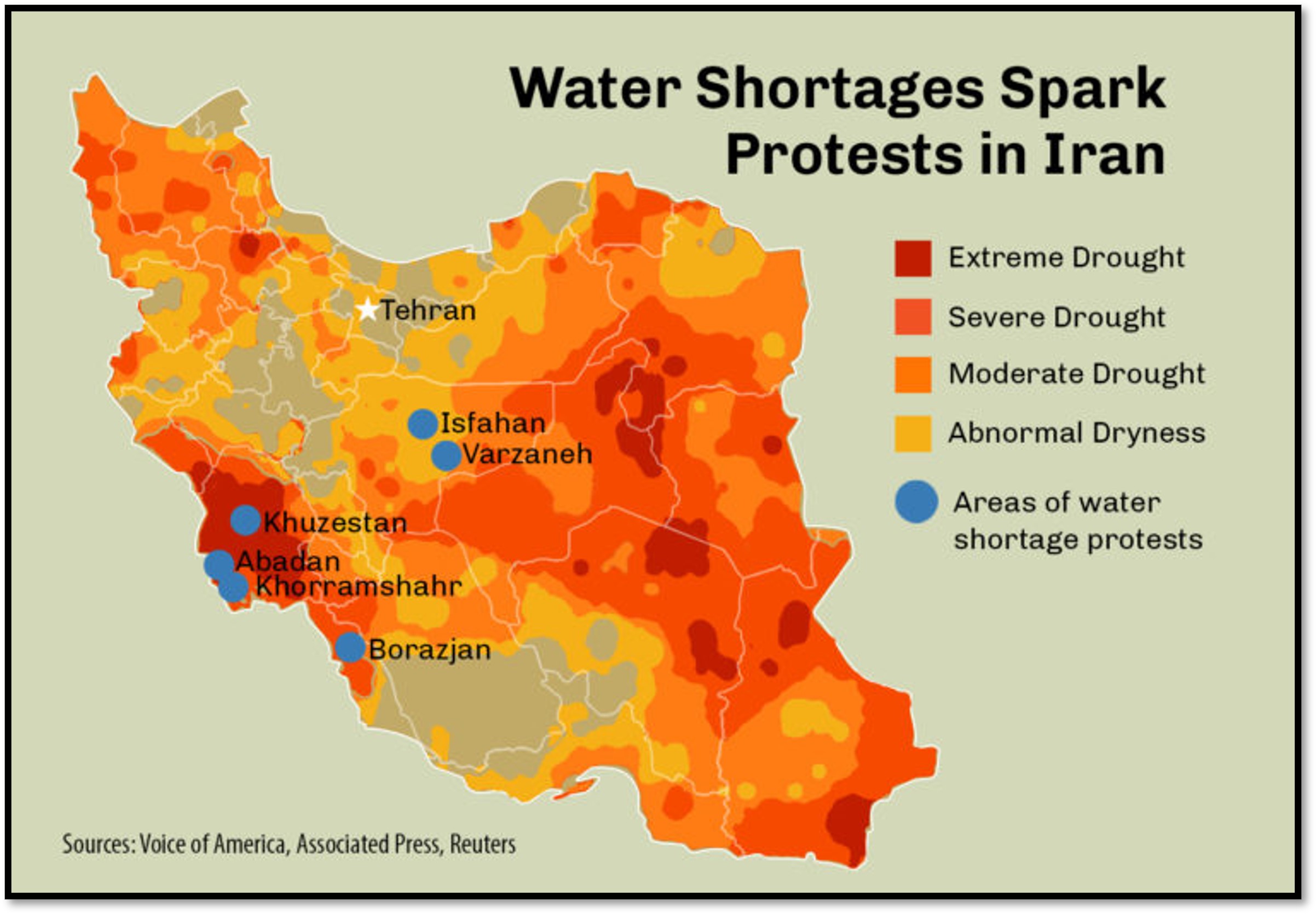 Iran’s water problems are the results of decades of bad management, poor environmental governance, and lack of foresight. Iran’s plans for development did not count water as a major limitation to population growth. Iranian leaders, under the shah and then under the Islamic Republic, thought that they could buy technology to overcome the shortfall in water resources.
Iran’s water problems are the results of decades of bad management, poor environmental governance, and lack of foresight. Iran’s plans for development did not count water as a major limitation to population growth. Iranian leaders, under the shah and then under the Islamic Republic, thought that they could buy technology to overcome the shortfall in water resources.
This mentality was not specific to Iran. Egypt, Iraq, Libya, and Saudi Arabia also had similarly ambitious developments to overcome their natural water limitations and achieve food self-sufficiency. Younger countries, such as the United Arab Emirates, have also dismissed natural resource limitations.
Across the region, leaders have taken pride in concrete and steel. Major engineering projects, such as dams, are symbols of development and progress. They also create jobs, boosting the economy in the short run.
Under the monarchy, Iran looked to the United States for models of development. Two projects had an impact on planners in Iran for decades. One was the Hoover Dam, the tallest dam in the world when it was completed in 1935. The second was the Tennessee Valley Authority (TVA), a New Deal program that greatly expanded electric and water infrastructure across seven states in the South in the 1930s.
In the 1950s, Iran contracted with the Development and Resources Corporation, an American company led by two former TVA chairmen, to develop Khuzestan province using the same approach.
Since the 1979 revolution, Iran has built many large dams, even amid the 1980-1988 war with Iraq and waves of sanctions. It became the world’s third largest dam builder after China and Japan. But Iran has over-dammed its rivers and degraded the environment. Many dams were built in poor locations. As a result, many people were displaced, and valuable wetlands and their ecosystems were seriously damaged.
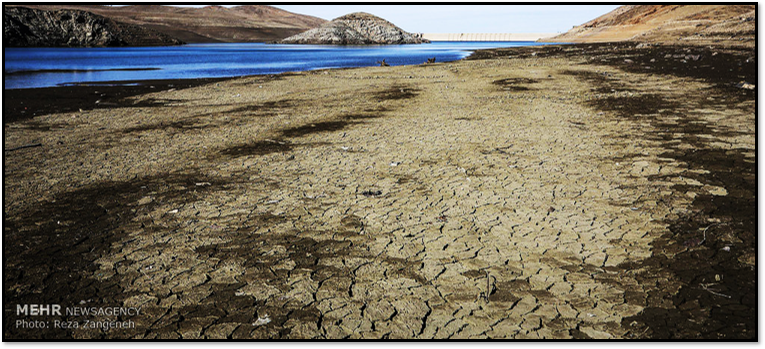
“We made these mistakes in the 1980s,” Issa Kalantari, the head of Iran’s Environment Department and a former Minister of Agriculture, admitted in 2018. “Then we came to realize that in places that we'd built dams, we shouldn't have built any, and in places where we should have built dams, we didn't build any.”
The government continued to make blunders regarding dams well into the 2000s. For example, the Gotvand Dam, completed in 2012 in Khuzestan, was built on salt beds that made the water in the reservoir unfit for irrigation. Virtually all environmental experts agree that the project was a terrible engineering mistake, but the government has played down the impact.
Even as policymakers became aware that the dams were having undeniable consequences on the environment, they continued to build, either prioritizing ideology over science or giving into corruption.
How do water shortages relate to Iran’s other environmental and social problems?
Overuse and mismanagement of water have caused desertification and led wetlands to dry up in Iran and elsewhere in the region. The dry soil is easily picked up by the wind. The resulting dust storms can paralyze daily life across society by disrupting water and power delivery and forcing government offices, businesses and schools to close. The dust also causes serious respiratory problems. In Ahvaz, the capital of Khuzestan province, dust storms sparked major protests in 2015 and 2017. Dust storms are particularly serious in Khuzestan because it is a hot and humid region.
The public has become increasingly aware of Iran’s myriad environmental problems. The tragedy of the drying of Lake Urmia, once the largest lake in the Middle East, was a turning point. As of the late 1990s, its surface area was about 2,000 square miles. By 2015, it had shrunk by some 90 percent. Dams built on the lake’s tributaries diverted water, and water-intensive crops took their toll. Protests by locals, social media campaigns and photos of marooned ships and shuttered motels helped build public awareness of the severity of the problem. As a result, President Hassan Rouhani’s government (2013-2021) began conservation efforts that have not resulted in what was promised, the restoration of the lake.
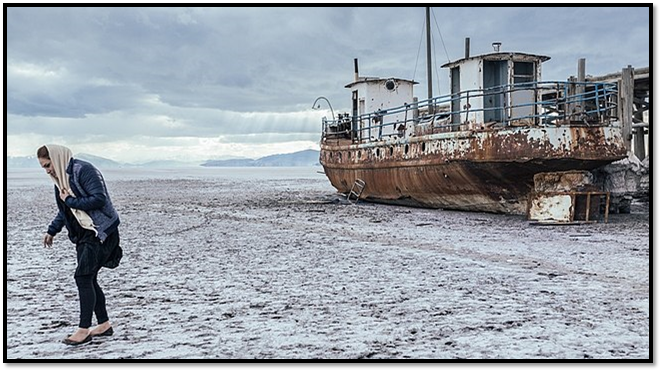
Water is just one of several catalysts for protests in Iran. The frequency and intensity of demonstrations have been increasing.
- In December 2017 and January 2018, frustration over the price of eggs and basic goods triggered protests in more than 140 cities across Iran.
- In November 2019, a surprise hike in gas prices led to demonstrations in at least 100 cities and towns.
- In January 2020, Iranians in major cities protested after officials admitted that the Revolutionary Guards had shot down Ukraine International Airlines Flight PS752, killing all 176 innocent people on board.
Iran’s model of development has not allowed for relieving pressure on the environment. In countries with more advanced economies, governments have sought to lessen dependence on natural resources by diversifying their economies. Countries in Western Europe, for example, transitioned away from agrarian-based economies to ones based on services and industry. The return on one drop of water in the industrial or service sectors is much higher than in the agriculture sector. So Europe started buying food and utilizing cheap labor from developing countries while selling technology and services abroad.
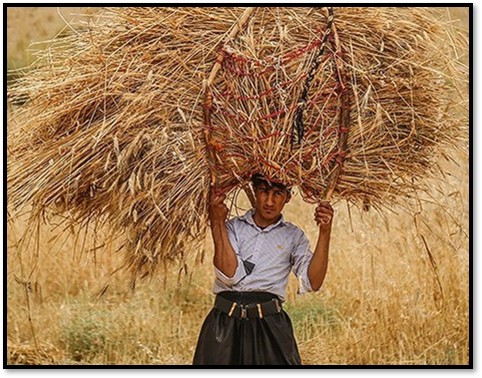
Iran has made modest progress in diversifying its economy. But it is still largely dependent on its natural resources, especially oil but also water. About 90 percent of Iran’s water is allocated to agriculture, which as of 2019, still accounted for 12 percent of Iran’s GDP (gross domestic product) compared to less than 1 percent for Britain, Germany and the United States.
Iran also depends on farming for a large share of its jobs. As of 2019, 17 percent of the labor force was employed in agriculture compared to 4 percent in the European Union and 1 percent in the United States. Iran could relieve some pressure on its water resources by expanding mechanization and implementing more efficient irrigation methods. Crop yields could increase with less need for human labor.
But Iran’s economy, weakened by sanctions, is not prepared to deal with labor dislocation. As of September 2021, unemployment was 9.6 percent. The government does not have the capacity to provide many alternative jobs. It would prefer to keep people on farms than push them into the cities, where they would be more idle and more likely to take to the street in protest.
Is water mismanagement likely to be a growing problem in the future?
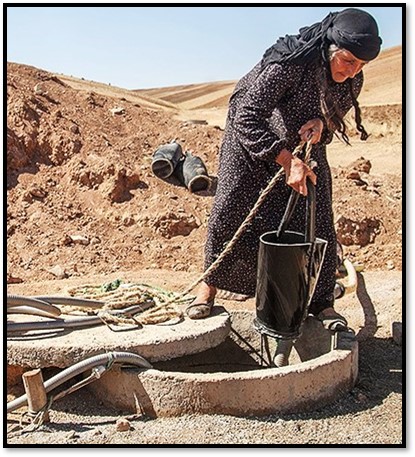
The projections for the coming years are worse. Iran is already water bankrupt; it uses more water each year than its renewable sources produce. Iran has increasingly tapped both its surface water (i.e rivers, lakes, etc.) and groundwater to the point where it cannot pump any groundwater in many parts of the country. Surface water is like a checking account, and groundwater is like a savings account. Iran has essentially been dipping deeper into its savings over the years. So it needs to reduce consumption.
Even during wet years, the government has failed to properly take advantage of the stored rainfall in its huge reservoirs to prepare for droughts. The 2020-2021 drought that caused water shortages followed two wet years and unprecedented floods, yet the government was still unprepared for the drought.
Climate change is also exacerbating Iran’s longstanding problems. Higher temperatures will increase demand for water for agriculture and for energy production to cool homes and businesses. The increasing frequency of extreme weather events, including droughts, will make Iran’s dwindling resources harder to manage.
Iran’s national model for economic development has depended on using massive amounts of water for agriculture and industry. How has this national policy impacted, even backfired on, local communities?
In the short term, building petrochemical facilities, sugar cane factories, steel mills, and other plants boosted local economies by producing jobs and raising land prices. But many of the jobs created by such projects have not been sustainable or have been given to workers from elsewhere instead of locals.
The pollution from heavy industry has also negatively impacted the health of local communities. The waste from factories has polluted the air, soil and water. In 2013, three Iranian cities – Ahvaz, Sanandaj and Kermanshah – were among the world’s 10 most polluted cities in terms of air quality, according to a World Health Organization index.
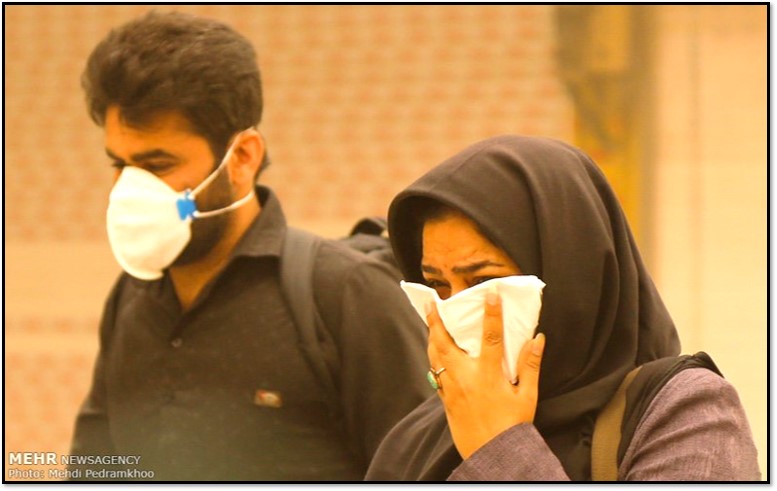
The government has failed to adequately enforce existing environmental regulations, let alone pass stricter ones aimed at conservation. Enforcing regulations could entail closing factories and disrupting the labor market. So the authorities face a choice between allowing pollution to continue or risk putting workers out of their jobs and onto the streets.
In Khuzestan, the issue of environmental justice looms particularly large. Activists and demonstrators have accused the central government of systematic discrimination against the Arab populations as well as ethnic and religious minorities in Khuzestan. They alleged that the central government, dominated by Persians, has not invested adequately in the province even though it is rich in natural resources.
Khuzestan is home to 80 percent of Iran’s onshore oil reserves and five major rivers. Socioeconomic indicators from the province suggest systematic neglect of infrastructure, the education sector and health services. The locals have also been frustrated that water has been transferred to other provinces. The water left in Khuzestan is often polluted.
How does Iran compare to other countries in the region in terms of water mismanagement or scarcity?
Virtually all countries in the Middle East have mismanaged their water resources. For example, in the 1990s, Saudi Arabia exhausted its groundwater as it tried to become a wheat exporter. It succeeded in producing a lot more wheat but destroyed many of its aquifers in the process. Even Israel, which has pioneered water-related technology, has had problems resulting from unsustainable practices.
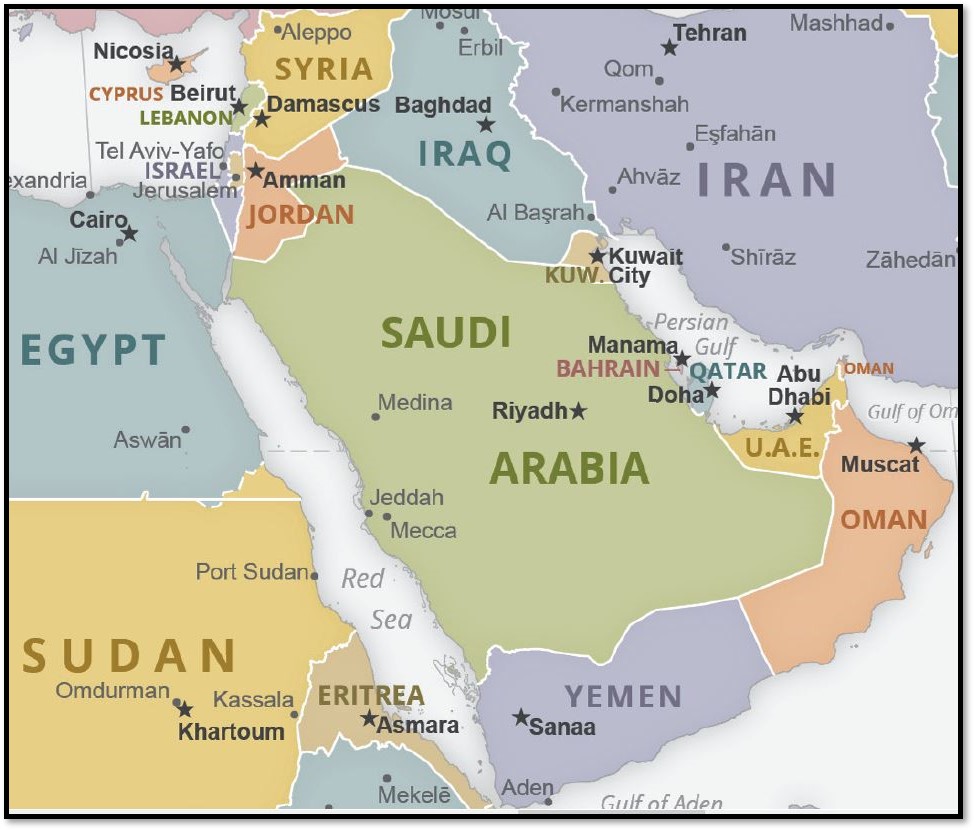 Iran’s neighbors in the southern Persian Gulf have expanded desalination efforts to provide potable water to their populations. But the strategy is not sustainable because the byproduct, brine, damages the ecosystem. The quality of the Persian Gulf’s water has degraded to the point that marine life is being seriously threatened.
Iran’s neighbors in the southern Persian Gulf have expanded desalination efforts to provide potable water to their populations. But the strategy is not sustainable because the byproduct, brine, damages the ecosystem. The quality of the Persian Gulf’s water has degraded to the point that marine life is being seriously threatened.
Within the region, Iran is ahead of the curve in witnessing the long-term impacts of poor planning as it started industrializing earlier than many other countries. Yet, it has not been able to effectively revise its development plans and environmental governance structure.
But the region’s water problems cannot be solved by water engineers or technological advances alone. That’s a dangerous and reductionist way to interpret events that then leads to merely band aid solutions.
The region needs democratic institutions to design equitable ways to manage and distribute resources. To deal with wider environmental problems, governments have to diversify their economies and create jobs in ways that are sustainable. This is expensive and difficult, so developing countries will need help to make transitions that will combat climate change. For example, Iran is not going to close petrochemical plants and cut jobs just to shrink its carbon footprint – not without ways to absorb displaced workers and replace the revenue made from oil.
Environmental mismanagement is just one symptom of poor governance. Policies narrowly focused on environmental issues alone cannot lead to transformative change and overcome more fundamental problems.
